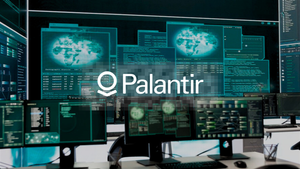
San Jose, CA – November 11, 2025 – Advanced Micro Devices (NASDAQ: AMD) has laid out an aggressive and comprehensive blueprint for innovation, signaling a profound strategic shift aimed at securing a dominant position in the burgeoning artificial intelligence (AI) and high-performance computing (HPC) markets. Through a series of landmark strategic agreements, targeted acquisitions, and an accelerated product roadmap, AMD is not merely competing but actively shaping the future landscape of the semiconductor industry. This multi-faceted strategy, spanning from late 2024 to the present, underscores the company's commitment to an open ecosystem, pushing the boundaries of AI capabilities, and expanding its leadership in data center and client computing.
The immediate significance of AMD's strategic maneuvers cannot be overstated. With the AI market projected to reach unprecedented scales, AMD's calculated investments in next-generation GPUs, CPUs, and rack-scale AI solutions, coupled with critical partnerships with industry giants like OpenAI and Oracle, position it as a formidable challenger to established players. The blueprint reflects a clear vision to capitalize on the insatiable demand for AI compute, driving substantial revenue growth and market share expansion in the coming years.
The Technical Core: Unpacking AMD's Accelerated AI Architecture and Strategic Partnerships
AMD's innovation blueprint is built upon a foundation of cutting-edge hardware development and strategic alliances designed to accelerate AI capabilities at every level. A cornerstone of this strategy is the landmark 6-gigawatt, multi-year, multi-generation agreement with OpenAI, announced in October 2025. This deal establishes AMD as a core strategic compute partner for OpenAI's next-generation AI infrastructure, with the first 1-gigawatt deployment of AMD Instinct MI450 Series GPUs slated for the second half of 2026. This collaboration is expected to generate tens of billions of dollars in revenue for AMD, validating its Instinct GPU roadmap against the industry's most demanding AI workloads.
Technically, AMD's Instinct MI400 series, including the MI450, is designed to be the "heart" of its "Helios" rack-scale AI systems. These systems will integrate upcoming Instinct MI400 GPUs, 5th generation AMD EPYC "Venice" CPUs (based on the Zen 6 architecture), and AMD Pensando "Vulcano" network cards, promising rack-scale performance leadership starting in Q3 2026. The Zen 6 architecture, set to launch in 2026 on TSMC's 2nm process node, will feature enhanced AI capabilities, improved Instructions Per Cycle (IPC), and increased efficiency, marking TSMC's first 2nm product. This aggressive annual refresh cycle for both CPUs and GPUs, with the MI350 series launching in H2 2025 and the MI500 series in 2027, signifies a relentless pursuit of performance and efficiency gains, aiming to match or exceed competitors like NVIDIA (NASDAQ: NVDA) in critical training and inference workloads.
Beyond hardware, AMD's software ecosystem, particularly ROCm 7, is crucial. This open-source software platform boosts training and inference performance and provides enhanced enterprise tools for infrastructure management and deployment. This open ecosystem strategy, coupled with strategic acquisitions like MK1 (an AI inference startup acquired on November 11, 2025, specializing in high-speed inference with its "Flywheel" technology) and Silo AI (acquired in July 2024 to enhance AI chip market competitiveness), differentiates AMD by offering flexibility and robust developer support. The integration of MK1's technology, optimized for AMD Instinct GPU architecture, is set to significantly strengthen AMD's AI inference capabilities, capable of processing over 1 trillion tokens per day.
Initial reactions from the AI research community and industry experts have been largely positive, recognizing AMD's strategic foresight and aggressive execution. The OpenAI partnership, in particular, is seen as a game-changer, providing a massive validation for AMD's Instinct platform and a clear pathway to significant market penetration in the hyper-competitive AI accelerator space. The commitment to an open software stack and rack-scale solutions is also lauded as a move that could foster greater innovation and choice in the AI infrastructure market.
Market Ripple Effects: Reshaping the AI and Semiconductor Landscape
AMD's blueprint is poised to send significant ripple effects across the AI and semiconductor industries, impacting tech giants, specialized AI companies, and startups alike. Companies like Oracle Cloud Infrastructure (NYSE: ORCL), which will offer the first publicly available AI supercluster powered by AMD’s "Helios" rack design, stand to benefit immensely from AMD's advanced infrastructure, enabling them to provide cutting-edge AI services to their clientele. Similarly, cloud hyperscalers like Google (NASDAQ: GOOGL), which has launched numerous AMD-powered cloud instances, will see their offerings enhanced, bolstering their competitive edge in cloud AI.
The competitive implications for major AI labs and tech companies, especially NVIDIA, are profound. AMD's aggressive push, particularly with the Instinct MI350X positioned to compete directly with NVIDIA's Blackwell architecture and the MI450 series forming the backbone of OpenAI's future infrastructure, signals an intensifying battle for AI compute dominance. This rivalry could lead to accelerated innovation, improved price-performance ratios, and a more diverse supply chain for AI hardware, potentially disrupting NVIDIA's near-monopoly in certain AI segments. For startups in the AI space, AMD's open ecosystem strategy and partnerships with cloud providers offering AMD Instinct GPUs (like Vultr and DigitalOcean) could provide more accessible and cost-effective compute options, fostering innovation and reducing reliance on a single vendor.
Potential disruption to existing products and services is also a key consideration. As AMD's EPYC processors gain further traction in data centers and its Ryzen AI 300 Series powers new Copilot+ AI features in Microsoft (NASDAQ: MSFT) and Dell (NYSE: DELL) PCs, the competitive pressure on Intel (NASDAQ: INTC) in both server and client computing will intensify. The focus on rack-scale AI solutions like "Helios" also signifies a move beyond individual chip sales towards integrated, high-performance systems, potentially reshaping how large-scale AI infrastructure is designed and deployed. This strategic pivot could carve out new market segments and redefine value propositions within the semiconductor industry.
Wider Significance: A New Era of Open AI Infrastructure
AMD's strategic blueprint fits squarely into the broader AI landscape and trends towards more open, scalable, and diversified AI infrastructure. The company's commitment to an open ecosystem, exemplified by ROCm and its collaborations, stands in contrast to more closed proprietary systems, potentially fostering greater innovation and reducing vendor lock-in for AI developers and enterprises. This move aligns with a growing industry desire for flexibility and interoperability in AI hardware and software, a crucial factor as AI applications become more complex and widespread.
The impacts of this strategy are far-reaching. On one hand, it promises to democratize access to high-performance AI compute, enabling a wider range of organizations to develop and deploy sophisticated AI models. The partnerships with the U.S. Department of Energy (DOE) for "Lux AI" and "Discovery" supercomputers, which will utilize AMD Instinct GPUs and EPYC CPUs, underscore the national and scientific importance of AMD's contributions to sovereign AI and scientific computing. On the other hand, the rapid acceleration of AI capabilities raises potential concerns regarding energy consumption, ethical AI development, and the concentration of AI power. However, AMD's focus on efficiency with its 2nm process node for Zen 6 and optimized rack-scale designs aims to address some of these challenges.
Comparing this to previous AI milestones, AMD's current strategy could be seen as a pivotal moment akin to the rise of specialized GPU computing for deep learning in the early 2010s. While NVIDIA initially spearheaded that revolution, AMD is now making a concerted effort to establish a robust alternative, potentially ushering in an era of more competitive and diversified AI hardware. The scale of investment and the depth of strategic partnerships suggest a long-term commitment that could fundamentally alter the competitive dynamics of the AI hardware market, moving beyond single-chip performance metrics to comprehensive, rack-scale solutions.
Future Developments: The Road Ahead for AMD's AI Vision
The near-term and long-term developments stemming from AMD's blueprint are expected to be transformative. In the near term, the launch of the Instinct MI350 series in H2 2025 and the initial deployment of MI450 GPUs with OpenAI in H2 2026 will be critical milestones, demonstrating the real-world performance and scalability of AMD's next-generation AI accelerators. The "Helios" rack-scale AI systems, powered by MI400 series GPUs and Zen 6 "Venice" EPYC CPUs, are anticipated to deliver rack-scale performance leadership starting in Q3 2026, marking a significant leap in integrated AI infrastructure.
Looking further ahead, the Zen 7 architecture, confirmed for beyond 2026 (around 2027-2028), promises a "New Matrix Engine" and broader AI data format handling, signifying even deeper integration of AI functionalities within standard CPU cores. The Instinct MI500 series, planned for 2027, will further extend AMD's AI performance roadmap. Potential applications and use cases on the horizon include more powerful generative AI models, advanced scientific simulations, sovereign AI initiatives, and highly efficient edge AI deployments, all benefiting from AMD's optimized hardware and open software.
However, several challenges need to be addressed. Sustaining the aggressive annual refresh cycle for both CPUs and GPUs will require immense R&D investment and flawless execution. Further expanding the ROCm software ecosystem and ensuring its compatibility and performance with a wider range of AI frameworks and libraries will be crucial for developer adoption. Additionally, navigating the complex geopolitical landscape of semiconductor manufacturing and supply chains, especially with advanced process nodes, will remain a continuous challenge. Experts predict an intense innovation race, with AMD's strategic partnerships and open ecosystem approach potentially creating a powerful alternative to existing AI hardware paradigms, driving down costs and accelerating AI adoption across industries.
A Comprehensive Wrap-Up: AMD's Bold Leap into the AI Future
In summary, AMD's blueprint for innovation represents a bold and meticulously planned leap into the future of AI and high-performance computing. Key takeaways include the strategic alliances with OpenAI and Oracle, the aggressive product roadmap for Instinct GPUs and Zen CPUs, and the commitment to an open software ecosystem. The acquisitions of companies like MK1 and Silo AI further underscore AMD's dedication to enhancing its AI capabilities across both hardware and software.
This development holds immense significance in AI history, potentially marking a pivotal moment where a formidable competitor emerges to challenge the established order in AI accelerators, fostering a more diverse and competitive market. AMD's strategy is not just about producing faster chips; it's about building an entire ecosystem that supports the next generation of AI innovation, from rack-scale solutions to developer tools. The projected financial growth, targeting over 35% revenue CAGR and tens of billions in AI data center revenue by 2027, highlights the company's confidence in its strategic direction.
In the coming weeks and months, industry watchers will be closely monitoring the rollout of the Instinct MI350 series, further details on the OpenAI partnership, and the continued adoption of AMD's EPYC and Ryzen AI processors in cloud and client segments. The success of AMD's "Helios" rack-scale AI systems will be a critical indicator of its ability to deliver integrated, high-performance solutions. AMD is not just playing catch-up; it is actively charting a course to redefine leadership in the AI-driven semiconductor era.
This content is intended for informational purposes only and represents analysis of current AI developments.
TokenRing AI delivers enterprise-grade solutions for multi-agent AI workflow orchestration, AI-powered development tools, and seamless remote collaboration platforms.
For more information, visit https://www.tokenring.ai/.






